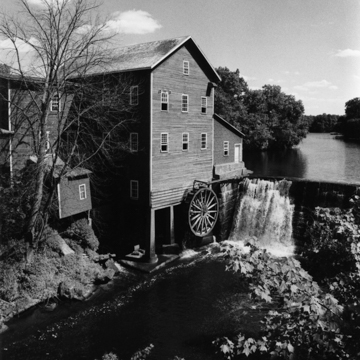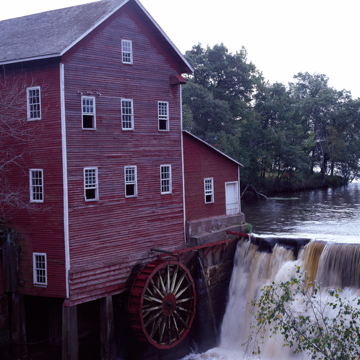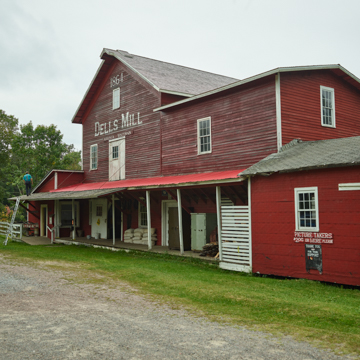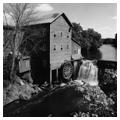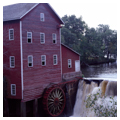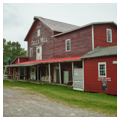One of the most photographed sights in Wisconsin, Dells Mill is a picturesque relic of days gone by. Too picturesque, perhaps, since its overshot waterwheel, which so charms visitors, is neither functional nor original. It was added in 1968 to make the mill look the way a mill “should.” Nonetheless, this structure is one of the few nineteenth-century Wisconsin gristmills to survive with its workings intact. Instead of a vertical waterwheel, a horizontal turbine, hidden beneath the structure, powered the mill. When the miller opened the sluice gate, water spilled from the millpond and pushed the turbine vanes, rotating the turbine and drive shaft. The shaft ran up into the mill, where a wooden cog distributed its turning power to run machinery for grinding, cleaning, sorting, and sifting grain. The original turbine, replaced in the 1920s, is on display in this working mill museum; its successor is under the lean-to power shed on the mill’s upstream side.
The mill was built in stages. The original portion, built in the mid-1860s, is a five-level, front-gabled structure, framed with hand-hewn maple timbers, joined mostly with wooden pegs, and clad in clapboard. Today it perches beside the milldam atop more recent concrete stilts. The two-story wing on the north (downstream) side dates from 1904, whereas the twin single-story lean-tos on the south side date from 1940.
When Dells Mill opened in 1867, wheat cultivation was spreading to northwestern Wisconsin, and gristmills were springing up everywhere to grind local farmers’ yields. But over the next few decades, soil depletion, insects, blight, and competition from farmers farther west dramatically reduced Wisconsin’s wheat acreage. During World War I, however, increased demand induced the state’s wheat growers to mount a brief comeback. At that time, the mill’s owners replaced their original buhrstone with a more efficient Midget Marvel roller mill. Ironically, the invention of the roller mill in 1877 had helped undermine Wisconsin wheat farming by making it easier to grind the hard winter wheat grown in Minnesota and the Dakotas.















